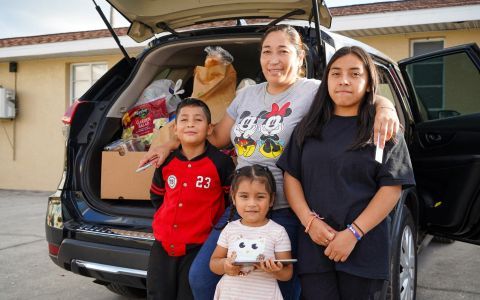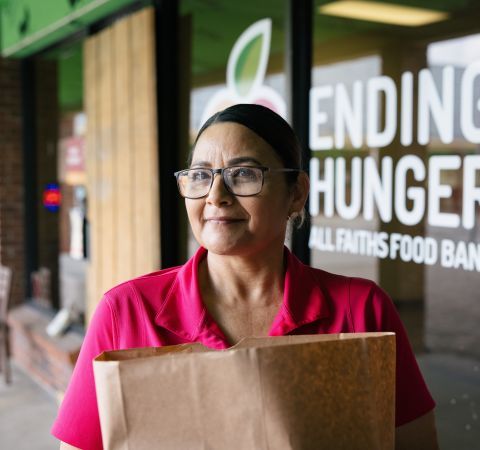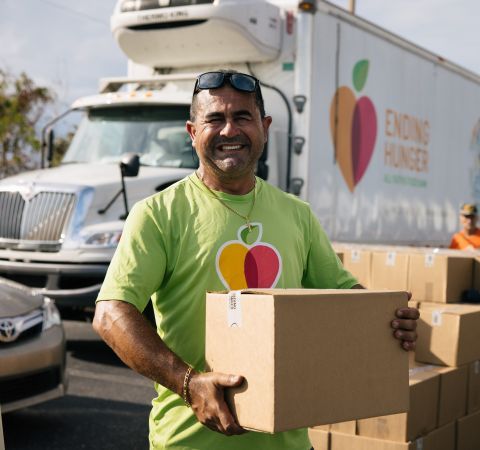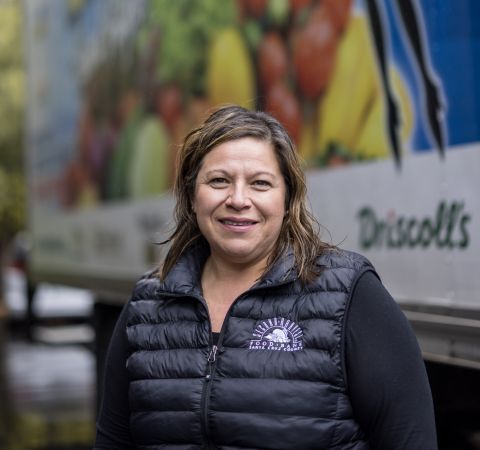Food insecurity in Latino communities
Food insecurity can happen to anyone. But each community’s experience with food insecurity is unique. Of the 44 million people who experiencing food insecurity in the United States, nearly 13 million identify as Latino.

Facts about Latino hunger
-
In 2022, 1 in 5 Latinos in the United States experienced food insecurity.
According to the USDA, nearly 13 million Latinos could not access enough food to lead a healthy, active life.
-
Latinos are 2 times more likely to experience food insecurity.
Latinos are more likely to face hunger than their white neighbors who do not identify as Hispanic or Latino.
-
Latino children are twice as likely to face hunger.
In 2022, 26% of Latino children experience food insecurity. That’s nearly one in three Latino children who do not have reliable access to food.
-
Latinos are more likely to face hunger in almost every county.
Food insecurity among Latinos is higher than among white individuals in 96% of United States counties.
Causes of food insecurity in Latino communities
There are many reasons why Latinos are more likely to experience food insecurity. Some of the most common reasons include:
Racism and discrimination
Latinos often face racism and discrimination. This can make getting good jobs, fair pay, housing, education, and food harder.
Language and cultural barriers
A lot of information and resources do not reflect the language and culture of many Latinos. This can make it more difficult to meet basic needs.
Immigration challenges
Immigration policies in the United States can make it harder for Latinos to find good jobs and access other resources. The fear of deportation may prevent people from using food programs.
Addressing food insecurity in Latino communities
Your ability to bring home meals shouldn’t be affected by your race or zip code. That’s why Feeding America, a national network of food banks, provides food and resources to all people experiencing food insecurity, including Latinos.

Supporting Latino-led programs
The Feeding America network is committed to learning from and partnering with Latinos to ensure they have the food they need to thrive.

Providing grants to food banks serving communities of color and rural communities
Feeding America has granted more than $100 million to members to address hunger in communities of color and rural areas.

Advocating for policies that support Latinos
Ending hunger takes more than food. It also requires addressing issues that prevent Latinos from accessing food programs.
Help end hunger in every community
Hunger is a serious problem for Latinos, but there is hope. With your help, we can end hunger in every community.
Donate
Your donation will support innovative programs that provide food and resources to Latino-serving organizations.
Volunteer
Volunteers are essential for food banks and meal programs to provide culturally and linguistically appropriate services for Latinos.
